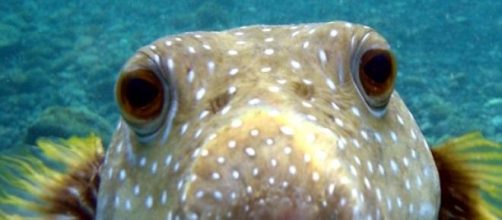In the last few decades, the developments in fish farming and aquaculture have caused an increase in the production of fish. The Guardian reports this week that one tonne of fish fillets result in the wastage of 40kgs of discarded skin. That's a lot of material to make glamour out of!
These skins are finding a new home with fashion designers as the skin can be used as leather. As a material, fish skin has layered patterns, it is elegant and flexible and is being used in belts, jackets and jewellery.
Fish leather used to be something that the poor would fashion into garments and accessories as it was cheap.
It has been around for a long time. Atlantic Leather, an Icelandic company, has been making it for the last 20 years. Today it has been resurrected as a modern solution to the growing demand for real leather.
Atlantic leather supplies big brands like Nike, Prasa, Dior, Puma and Ferragamo. The price is about the same as that of real leather, however one can purchase it in smaller pieces rather than having to buy a whole calf.
Other produces of fish leather, like the Wales based The Fish Leather Company, have also seen a rise in sales, especially from art and fashion students.
The demand for leather is rising much faster than its supply. If the trend continues, fish leather will fill in the gap.
While only the wealthy might still be able to buy shoes and bags made of real leather in the future, synthetic materials and fish leather will be used more and more in making apparel.
The other welcome externality is that the rise in the use of fish leather could create more jobs in processing locations, foe example, the area around Lake Victoria. Kenya is already working with the Danish development agency, Danida, to turn fish skin waste into leather.
There are some caveats however. In launching fish leather at a large scale, one of the concerns is the smell of the skin. But as the product becomes well known, this concern will dissipate. Even real leather has a smell, and consumers take it as a signature of authenticity.
The other issues are that of the economic cost of tanning and that the leather production will be competing with the use of skin as fish meal. These are all problems the industry still has to sort out. Yet, there is a potential market with many possibilities for continued usage.

